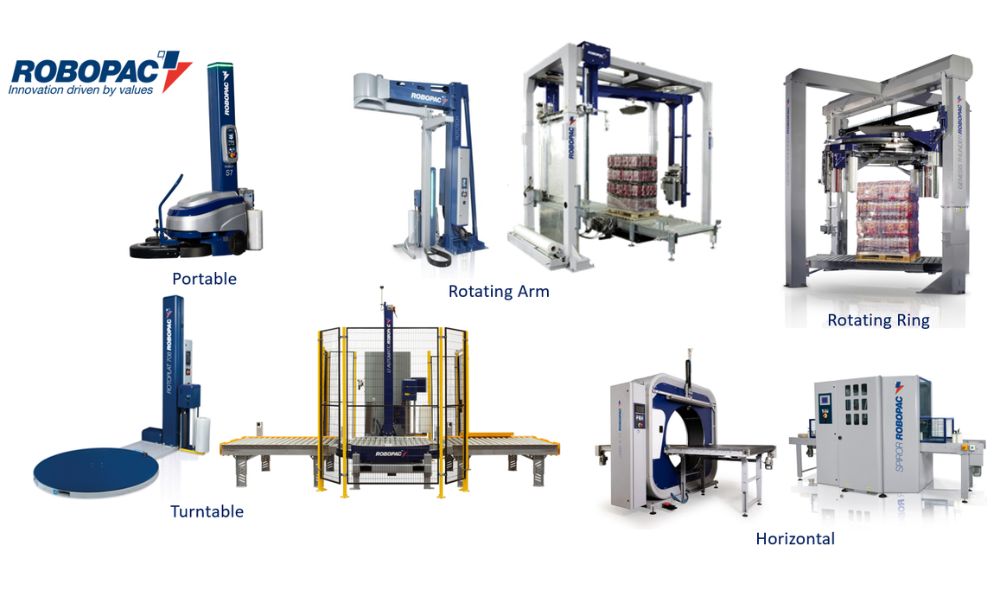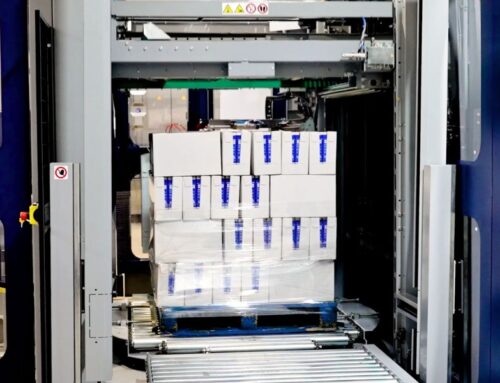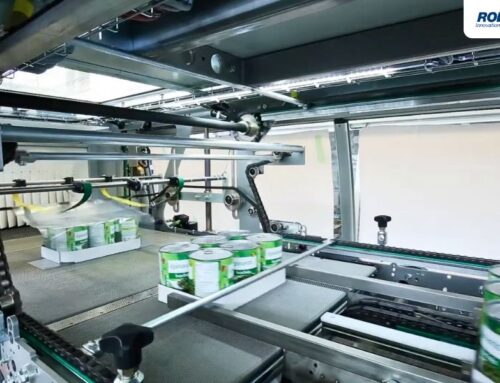If you are wrapping 10 or more pallets per day, it’s time to automate your stretch wrapping process. The right stretch wrapping equipment can save you time, reduce product damage during transit, and lower your expenses to create a more cost-effective operation.
One of the best investments you can make is a stretch wrapper machine, but that doesn’t mean any stretch wrapping equipment will suit your facility. Exploring your options and understanding how each type of stretch wrapper operates will help you make an informed decision to invest in a machine that is tailored to your business. Learn more with this overview of the different types of stretch wrap machines.
Reasons To Use a Stretch Wrap Machine
Stretch wrapping creates secure product loads that can safely move through the supply chain without tipping, collapsing, or breaking. There are several ways to achieve this, but stretch wrapping machines are by far the most effective option. Unlike hand wrapping solutions, stretch wrapping equipment offers fast and consistent wrapping that ensures a tight, secure wrap with the proper amount of containment force on the pallet load.
Because of this, stretch wrapping machines significantly reduce the risk of product damage during transport. The plastic wrap keeps items securely in place, preventing them from shifting or falling off the pallet. This is especially important for fragile or unevenly shaped products.
A stretch wrapper machine can also reduce your packaging costs. The stretch film itself is often cheaper than other packaging materials, and using a machine allows for more powerful stretch, tighter wrapping, and greater consistency from load to load. This boosts your packaging efficiency and minimizes material waste.
Automatic vs. Semi-Automatic Options
When it comes to choosing the right stretch wrapper machine for your business, the first thing you need to decide is whether you need an automatic or semi-automatic solution. The right choice for your business depends on your specific needs and the scale of your operations.
Semi-automatic stretch wrappers are a great option for businesses with a low to moderate volume of product loads to wrap each day. Companies that are wrapping 5–30 loads per hour should automate with a semi-automatic stretch wrapper. These machines are typically more affordable than fully automatic wrappers and require some manual input from workers. For example, someone will need to load the pallet into the wrapping area, sometimes attach the film, and start the wrap cycle.
At the end of the process, a worker will also need to remove the pallet and transport it to the next stage of the packaging line. As such, this type of stretch wrapper is ideal for businesses that don’t have a high volume of pallets to wrap but still want to improve their packing efficiency.
On the other hand, automatic pallet wrappers are designed for high-volume operations that are stretch wrapping 35 or more pallet loads per hour. They fully automate the process, wrapping pallets without any manual intervention. Conveyors transport pallets to and from the wrapping machine, creating a seamless transition between different stages of the packaging line.
While automatic wrapping machines generally cost more initially, they can save you money in the long run by dramatically reducing labor costs and increasing overall productivity. If your business wraps a large number of product loads each day, investing in an automatic stretch wrapper could be a smart move.
Many stretch wrapping machine styles come in both automatic and semi-automatic options, making it easy to find the exact solution your business needs.
Turntable Stretch Wrappers
Turntable stretch wrappers feature a rotating platform and a fixed stretch film carriage that moves up and down to wrap the entire load as it spins on the turntable. This type of machine is ideal for stable pallet loads that won’t tip or fall apart when rotating.
Turntables offer a compact and efficient stretch wrapping solution for your business. They come in both automatic and semi-automatic options to suit a wide range of operational needs.
Rotary Arm Stretch Wrappers
Rotary arm stretch wrappers are the opposite of turntable stretch wrappers. With these machines, the pallet stays stationary on the floor while an arm with the stretch film carriage rotates around it.
Because the product load stays still during the wrapping process, rotary arm wrappers are perfect for light or unstable pallet loads that can’t withstand the motion of a turntable. This includes extremely light loads that would fall over with the movement or unstable loads with awkward or non-uniform products that don’t stack perfectly. Rotary arm stretch wrappers also work well with product loads that are too heavy to rotate on a turntable.
Like with turntable wrappers, you can find both automatic and semi-automatic options for rotary arm stretch wrappers.
Rotary Ring Stretch Wrappers
Rotary ring stretch wrappers stand out as high-speed solutions for facilities that deal with a high volume of product loads every day. These wrappers feature a ring that contains the stretch film dispenser. The ring lowers around the product load to start dispensing film at the bottom, then works its way up while rotating around the product to create a quick, secure, and efficient wrap.
Because of their speed and power, rotary ring stretch wrappers are only available as automatic stretch wrapping options.
Horizontal Stretch Wrappers
Horizontal stretch wrappers also use a rotating ring to wrap product loads. However, they wrap loads horizontally—usually by moving products along a conveyor through the wrapping tunnel. Horizontal stretch wrappers are ideal for long or irregularly shaped products that don’t work as traditional pallet loads. This includes lumber, piping, windows and doors, rolled carpet and other textiles, tubing, and more.
Robopac USA offers a variety of horizontal stretch wrapping options, including low-speed semi-automatic, high-speed semi-automatic, and automatic machines.
The Right Stretch Wrapper for Your Business
In addition to knowing how the different types of stretch wrap machines work, you need to consider factors such as speed, size, product type, and more when choosing your equipment. Understanding these factors will help you make an informed decision that meets the needs of your operation.
First, assess the speed at which your packaging line operates. If your business wraps a high volume of pallets each day, you need a high-speed automatic stretch wrapper that can handle this demand. However, if your wrapping needs are more modest, a semi-automatic machine may suffice.
Next, consider the size and type of products you package. Ensure the stretch wrapper you choose can accommodate the dimensions of your largest pallets.
You should also think about how easy it will be to incorporate the new machine into your existing packaging line. Some stretch wrappers require special setups or additional equipment, while others can be easily integrated with your current processes.
Find Your Stretch Wrapping Solution at Robopac USA
The experts at Robopac USA can help you find the best stretch wrapping solution for your workflow. Explore our equipment options and design your ideal packaging line solution today.








